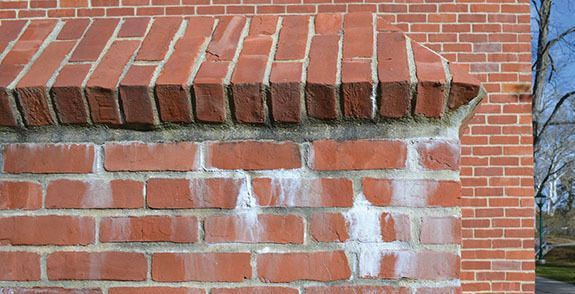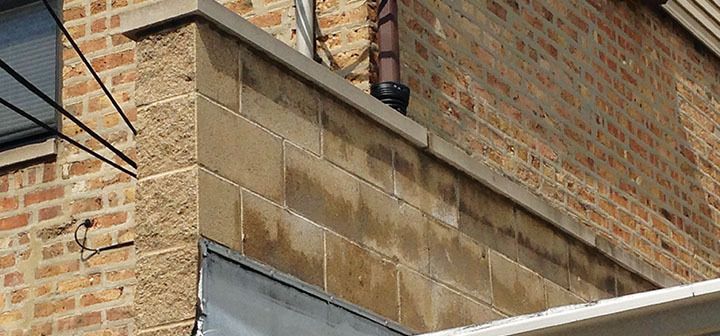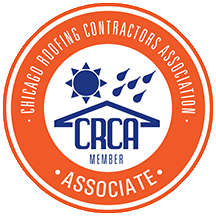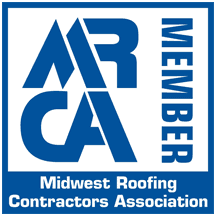How to Recognize Signs of Moisture Intrusion
White Stains on the Walls? Moldy Smells? Sagging Ceilings?
Efflorescence...
The first sign a masonry building has moisture intrusion and/or inadequate ventilation is Efflorescence – a white, chalky stain on the exterior of masonry buildings. Efflorescence happens when moisture weeps out through the face of masonry, bringing with it mineral deposits which cause staining.

Efflorescence – Old Town, Chicago
Take a drive through Chicago's neighborhoods and look for white stains – efflorescence. In Chicago neighborhoods with a lot of new construction, more than 30% of the buildings will have this tell-tale sign of moisture intrusion and entrapment.
You may notice efflorescence on brick buildings more than on other masonry, but that doesn't mean that brick is more prone to moisture absorption than other masonry, it's just easier to see.
If your building has efflorescence, don't call a sealant company yet. It is important to seal masonry, but not before the building is vented and has some time to dry. Sealing a wet building before fixing the moisture intrusion source will cause even more damage.
Also, sealing the building before fixing the source may force water inside the building. Water may leak from the ceilings, windows, doors and electrical outlets.
In the winter, the water can build up behind the face of sealed brick, then freeze and crack the face off the brick. This freeze/thaw action can also crack split face blocks and concrete blocks in half and degrade the structural integrity of your building.

Wet Split Face Block buildings look wet. Staining on concrete may be less obvious than it is on brick, but the damage is typically far more severe.
Efflorescence - Lincoln Park, Chicago, IL
Watch the video above to find out why masonry buildings, especially Split Face Block Buildings, get wet and stay wet.
"My client was smelling musty wafts. When we lifted the capstone off the parapet wall to investigate, we could see water trapped in the wall core. I think about 3 gallons poured out of this section of the wall. After all the water was drained, we installed WickRight Coping Vent, WickRight Low-Slope Roof Vent and new metal copings. The last time we checked, the building was completely dried out."
– Bob Kelly, Owner WickRight Inc.
Wafting Smells...
Wafting smells occur when masonry buildings do not have proper drainage and ventilation. Accumulated moisture and condensation breeds mold that decays wood trusses, joists, studs, furring strips, insulation and drywall. Smells may indicate mold spores in the air that are not healthy to breathe.
Chronic Leaking and Sagging Ceilings...
If you have a consistently wet area – not rushing water, which indicates a roof issue – but a seeping, persistent leak or a ceiling starts to sag, call WickRight immediately. Your building may require shoring.
Sagging occurs when
wet trusses or joists
begin to rot away. If this system rots through completely, pancaking may occur. Pancaking is when an upper story of a building falls to the story below.
This may result in catastrophic property damage, condemned buildings or fatalities. This may sound extreme, but home inspectors are finding rotting trusses on a regular basis. And WickRight is repairing rotting trusses more often since 2021.
Find a certified home inspector in your area:
Northern Illinois Chapter of The American Society of Home Inspectors (NIC-ASHI)
–
http://www.nicashi.com/
Chicago Chapter of InterNational Association of Certified Home inspectors–http://nachichicago.org/
American Society of Home Inspectors
–under specialty, choose Moisture Evaluations–
http://www.ashi.org/find




